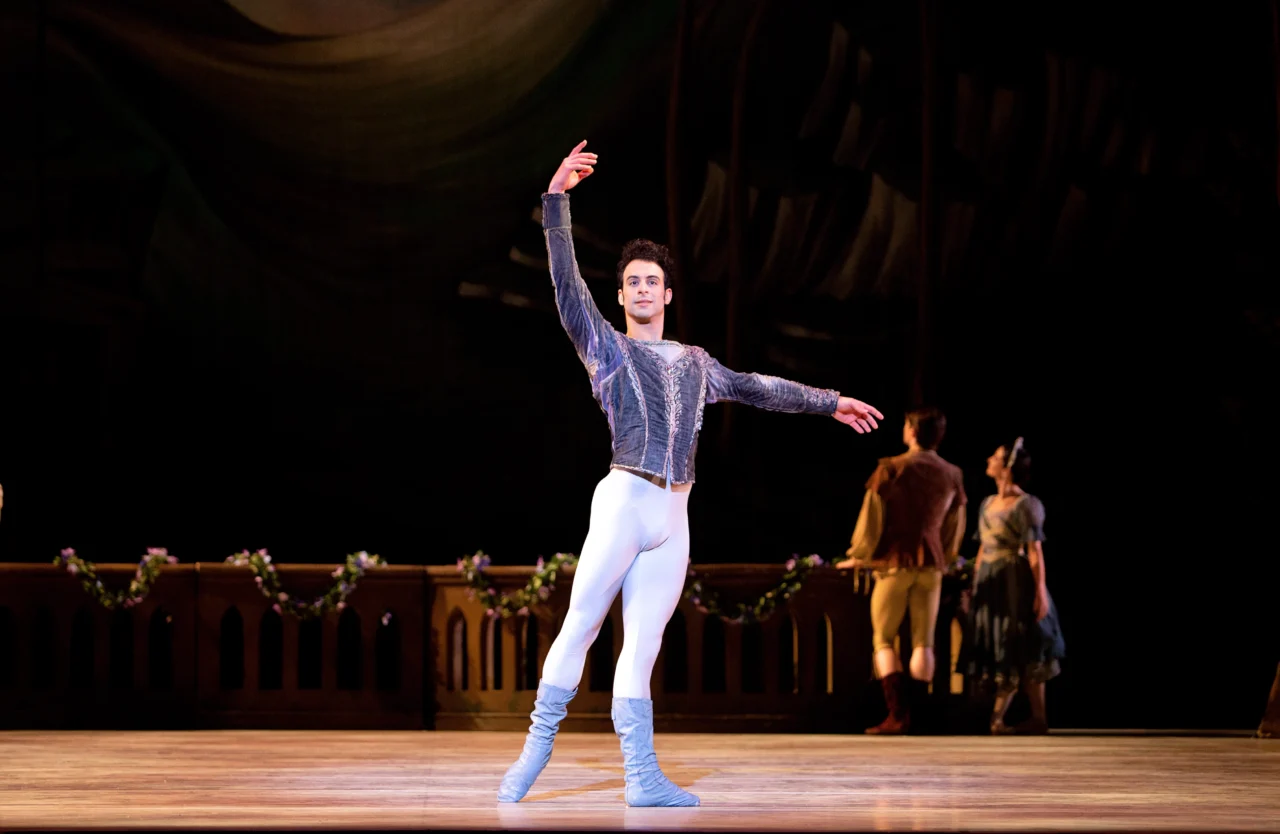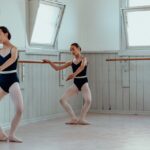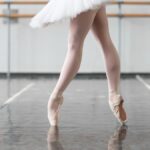Ballet, an art form known for its grace and precision, is built upon a foundation of fundamental movements that define its essence. Among these movements, the tendu stands out as a pivotal technique that encapsulates both simplicity and elegance. Through this article, we will explore the intricacies of the tendu, delving into its significance, mastery techniques, its relationship with other ballet movements, and the broader implications it carries beyond just dance. Join us on this journey to understand how tendu serves not only as a crucial element in ballet but also as a metaphor for growth and self-expression in life.
Understanding the Essence of Tendu
Tendu translates to “stretched” in French and embodies one of the most fundamental yet profoundly beautiful movements in ballet. This section aims to dissect the mechanics, philosophy, and significance of the tendu, allowing dancers and enthusiasts alike to appreciate its role in shaping a dancer’s skillset.
Mechanics of Tendu
The movement begins from a closed position, often the fifth position, where the feet are tightly crossed. As the dancer extends their leg outward, they keep contact with the ground until the toes nearly graze the floor. This subtle yet impactful gesture creates a seamless line that exudes grace and control.
The act of stretching the foot along the floor is akin to an artist meticulously applying paint to a canvas. Each tendu serves as a brushstroke, contributing to the overall picture of the performance. Through this process, dancers develop strength and flexibility, which become essential components in executing more complex movements later in their training.
The Role of Tendu in Ballet Training
The importance of tendu cannot be overstated; it serves as a gateway to a myriad of advanced movements. A dancer’s ability to perform a perfect tendu directly influences their capacity for executing pirouettes, jumps, and turns. Mastering tendu lays the groundwork for more intricate techniques and shapes the overall aesthetic quality of a performance.
Moreover, through regular practice, dancers cultivate muscle memory, enhancing their proficiency over time. This connection between the tendu and subsequent movements demonstrates the interconnected nature of ballet—each step builds upon the last, creating a cohesive narrative within the dance.
The Aesthetic Quality of Tendu
Beyond its technical application, the aesthetic appeal of tendu plays a vital role in engaging audiences. When executed with precision and artistry, a tendu can evoke emotion, drawing viewers into the dancer’s world. The visual impression created by the extension of the foot along the floor serves as a testament to the dancer’s strength and commitment to their craft.
As dancers explore the nuances of this movement, they begin to understand that each tendu can convey different feelings—be it serenity, tension, or joy. This versatility enhances a dancer’s ability to express themselves through the language of movement, elevating their performances to a higher artistic level.
The Relationship Between Tendu and Other Ballet Movements

While tendu is often celebrated in its own right, it is essential to recognize its interdependence with other ballet movements, particularly battement tendu. This section explores how tendu fits within the larger framework of ballet, highlighting its connection to related techniques and exercises.
Battement Tendu: A Step Further
The battement tendu, or “stretched beating,” incorporates a slight elevation and retraction while keeping the foot close to the ground. This nuanced distinction showcases the versatility of the tendu, demonstrating how it evolves into more dynamic expressions.
Battement tendu serves as an excellent exercise for developing muscle memory and strength, building on the principles established through basic tendu. The added complexity of this movement challenges dancers to engage their core and maintain proper alignment while navigating through the stretch and retraction phases.
Incorporating battement tendus into practice allows dancers to enhance their overall technique, bridging the gap between foundational movements and advanced choreography.
The Importance of Transitioning Between Movements
Understanding how to transition smoothly between tendus and other movements is crucial for any aspiring ballet dancer. These transitions not only require physical agility but also mental focus and artistic intent.
When moving from a tendu into a plié or a jeté, for example, dancers must maintain fluidity in their motions, ensuring that each movement appears effortless and intentional. The ability to connect different movements creates a seamless flow within choreography, captivating both the audience and fellow dancers.
Building a Comprehensive Training Regimen
To truly master the tendu and its associated movements, a comprehensive training regimen is essential. Instructors often recommend a combination of strength training, flexibility exercises, and focused practice of tendu variations.
Dancers should pay attention to proper alignment and posture throughout their training. Engaging the core and maintaining a lifted chest are critical elements that ensure the movement flows naturally from the center of the body. By dedicating time to drills that emphasize slow, deliberate movements, dancers can cultivate finesse and achieve the transformative quality that defines a perfected tendu.
Mastering the Technique: Precision and Artistry in Tendu

Achieving the perfect tendu is a pursuit that many dancers strive for. This section delves deeper into the various elements necessary for mastering this elegant movement, offering insights and tips for those seeking to refine their technique.
Alignment and Posture
Proper alignment and posture are non-negotiable when it comes to executing a flawless tendu. Dancers must be conscious of their bodies, ensuring that their shoulders, hips, and feet are aligned correctly to avoid any strain or injury.
Engaging the core is equally important, as it provides stability and support during the extension. A lifted chest not only enhances the aesthetic of the movement but also helps maintain balance as the leg extends outwards.
Articulation of the Feet
Attention to detail in the articulation of the feet is what transforms each tendu into a work of art. Dancers should focus on the subtleties of foot movement, ensuring that every joint is activated and the arch is maintained as the foot glides across the floor.
This meticulous approach to articulation adds depth to the movement, making it visually striking. Practicing with a mirror can help dancers observe their technique and make necessary adjustments to achieve the desired aesthetic quality.
Drills for Developing Muscle Memory
Cultivating muscle memory through targeted drills is essential for mastering the tendu. Dancers may benefit from practicing slow, controlled movements, allowing them to internalize the nuances of the stretch.
Incorporating exercises such as tendu en croisé, where the leg extends to the front, side, and back, can further enhance both strength and flexibility. Encouraging dancers to perform these drills repetitively fosters a deeper understanding of the movement and helps engrain it into their muscle memory.
The Broader Implications of Tendu Beyond Dance

The tendu transcends the realm of dance, serving as a metaphor for personal growth, exploration, and self-expression. This section examines how the principles underlying the tendu resonate with broader themes in life, inspiring individuals across various walks of life.
Stretching Beyond Limits
Just as a dancer stretches their foot along the floor, they seek to extend beyond their current limits. This act of reaching resonates with the human experience—the desire to push boundaries, explore new territories, and fully express oneself.
In both dance and life, embracing the discomfort of stretching beyond one’s comfort zone can lead to significant personal transformation. Whether it’s taking on new roles at work, pursuing creative endeavors, or nurturing relationships, the spirit of the tendu inspires individuals to embrace challenges and grow.
The Elegance of Self-Expression
The beauty of ballet, encapsulated in movements like the tendu, mirrors our aspirations for elegance in daily pursuits. Just as a dancer expresses emotions through movement, individuals can find their unique voices through creative outlets, communication, and actions.
Expressing oneself authentically often requires vulnerability, akin to the delicate balance of strength and grace present in a tendu. Embracing this duality allows individuals to navigate life with poise, cultivating an environment where creativity and connection can flourish.
Inspiring Growth and Resilience
The journey of mastering the tendu is not solely about perfecting a movement; it reflects the resilience required to pursue excellence in any field. The dedication and perseverance involved in ballet training serve as a reminder that growth often entails overcoming obstacles and setbacks.
By adopting a mindset focused on continuous improvement, individuals can approach challenges with determination. The lessons learned through the practice of tendu extend far beyond the dance studio, impacting various aspects of life and fostering an enduring spirit of resilience.
Conclusion

The tendu is much more than a simple action; it represents a profound journey of exploration, mastery, and self-expression. Through its elegant extension, tendu captures the essence of ballet while serving as a universal metaphor for growth and aspiration. By immersing ourselves in the nuances of this movement, we can cultivate an appreciation for the artistry of dance and apply its lessons to our lives. Ultimately, the tendu inspires us to reach beyond our limits, embracing the beauty of movement and the elegance of self-discovery.
✉️ Stay Connected — Subscribe for Weekly Updates
Discover timeless stories, practical wisdom, and beautiful culture — delivered straight to your inbox.
*We only share valuable insights — no spam, ever.






